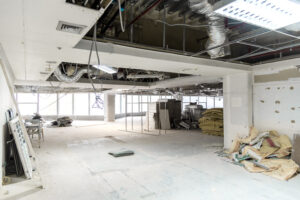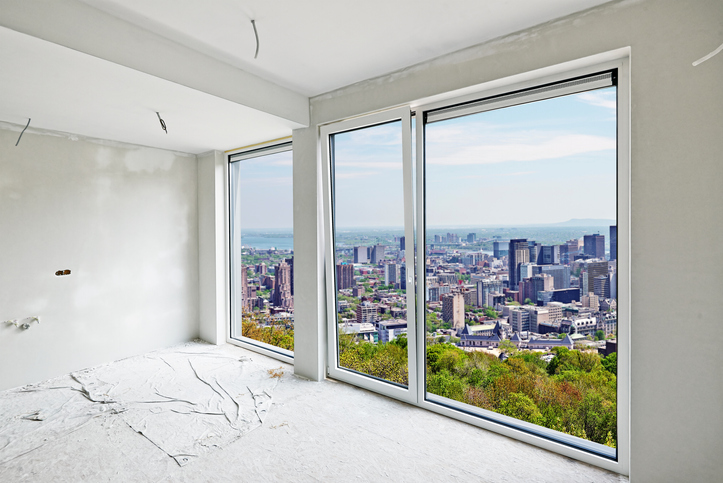 As a commercial landlord, you want to ensure your tenants have a well-maintained space where they can run their business. However, it’s not always clear where the responsibilities lie. If your tenant asks to knock down a wall, you should know who has to take action legally. Here’s more information about who is responsible for renovations in commercial leases.
As a commercial landlord, you want to ensure your tenants have a well-maintained space where they can run their business. However, it’s not always clear where the responsibilities lie. If your tenant asks to knock down a wall, you should know who has to take action legally. Here’s more information about who is responsible for renovations in commercial leases.
Download Printable Article (PDF) >>>
Outlining renovations in commercial leases
Every commercial lease should include a section about commercial remodeling. These renovations are improvements or additions to the rented space. Here, you’ll find details about each party’s obligations. This portion should answer a few questions, including:
-
Who has to complete the renovations?
-
Who has to pay for the renovations?
-
Who has design approval rights?
-
Who has work approval rights?
-
Who has to pay for a temporary commercial space?
If your tenant comes to you with a renovation request, you’ll first want to double-check what the lease states. Try to meet with the tenant to ensure both parties know which step to take next. Everyone will be on the same page as a result.
Let’s take a closer look at outlining renovations in commercial leases and what commercial leases should include in the remodeling portion.

The Difference Between Repairs and Renovations
Remember that repairs and renovations aren’t the same, which means the person responsible for them differs. If your tenant neglects the property, they’re responsible for repairs — but otherwise, you’ll need to negotiate. Here’s an example.
If your tenant accidentally put a hole in the wall, they’d have to pay for damages. But when the heater breaks unexpectedly, you’re responsible for the bill. That’s because, as a landlord, you have a legal obligation to keep the space habitable for the tenant.
Furthermore, landlords are obligated to keep the building intact. For instance, you have to make all repairs to the roof so you can prevent leaks and other damage that might affect your tenants. This same sentiment goes for the walls and foundation, as well.
However, because renovations are optional, you’ll likely have to share a few responsibilities with the tenant. Projects that involve replacing the floors or installing built-in shelving may help the tenant’s business — but they’re primarily elective. That’s why a lease clause matters.
What Are Trade Fixtures?
Some rules about residential properties remain consistent with commercial properties. That said, trade fixtures are unique to the latter. These are objects or features that businesses install to run their company, including signs and equipment.
Unlike renovations, you should note that trade fixtures aren’t permanent, which means that as long as the tenant pays for them, they own them. Keep in mind that trade fixtures can’t be expensive to remove, and they can’t cause damage to the property. If your tenant’s trade fixture doesn’t follow those rules, it could become an improvement.
To keep everything clear and simple, you should include a part about trade fixtures in the lease.
Who Designs and Completes the Renovation?
For the most part, you and the tenant will work together to design the renovation, while you’re responsible for the work. That’s because you know the space best, so you have the expertise to deliver on the tenant’s request. If your tenant has their own plan in mind for the design, you’ll still have to approve their ideas.
Most landlords prefer to hire contractors to complete the renovation so they have some control over the process. That sometimes depends on the work’s scale, as small additions like new curtains can easily happen without your help. That said, your tenant may want to hire their own workers to finish the remodel.
Then, you’ll have to ensure the tenant follows certain guidelines.
-
See whether the tenant has liability insurance.
-
Check that the tenant will prevent legal issues, like when a contractor isn’t paid.
-
Make sure you receive a construction schedule.
-
Ask the tenant to set aside money in the event they don’t finish the renovation.
Since various issues can occur when tenants are responsible for the work, you’re more likely to protect yourself when you complete the renovation.
Who Pays for the Renovation?
When it comes to commercial building renovation, you’ll note that payments are often the most uncertain part. That’s because it all depends on the situation. Even though you might do the work as the landlord, you don’t always have to pay for the renovation.
Generally, landlords will provide tenants with a tenant improvement allowance (TIA). This money allows tenants to make improvements that help with their business. Typically, landlords and tenants will negotiate the TIA before they sign the lease. Any expense over the allotted TIA becomes the tenant’s obligation.
Alternatively, you may want to offer a build-out allowance, which allows each tenant to choose from many renovation options. This way, you give them the chance to customize the space, but you control the work and the cost. It’s a helpful middle-ground for some landlords.
Another possibility would be to offer tenants free rent throughout the construction process. If you determine the renovation’s cost would be close or equal to the rental payments, you may be able to strike a deal with the tenant. This option will only work in some cases.
Either way, you’ll have to determine which choice makes the most sense for your property.
Tenants and Landlords Work Together to Complete Commercial Renovations
Many tenants in commercial buildings like to make renovations so the space better suits their business. However, it can get a bit complicated when you look at the details. Who’s responsible for renovations in commercial leases?
Mainly, tenants and landlords work together to settle on designs and construction. Then, landlords typically offer a TIA, so the tenants have a set budget to complete the renovations. If they spend more than the allotted amount, they’re responsible for the extra costs.
Altogether, landlords should outline renovations in commercial leases. This way, you won’t have a guessing game on your hands. Everyone will know what to expect when the time comes for some remodeling.



